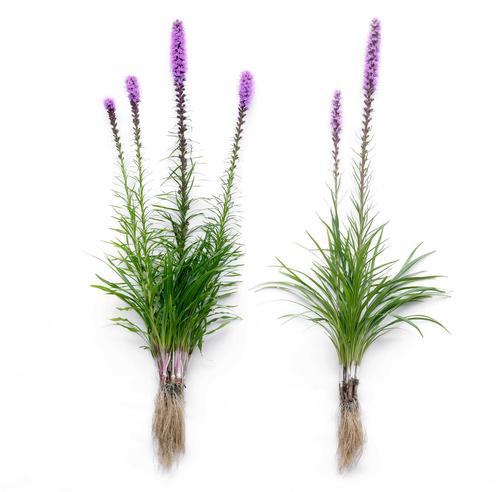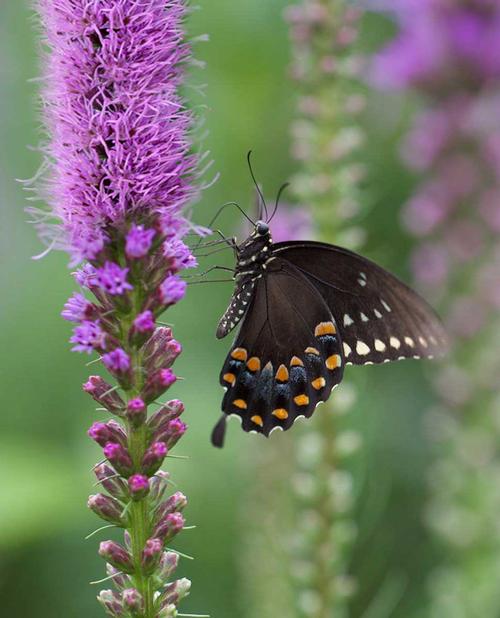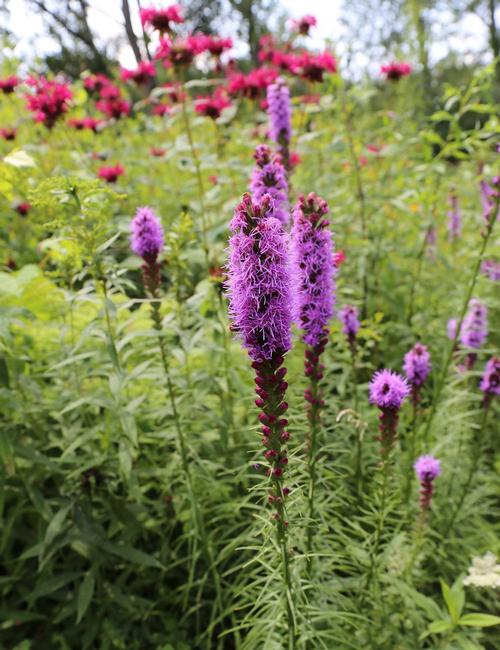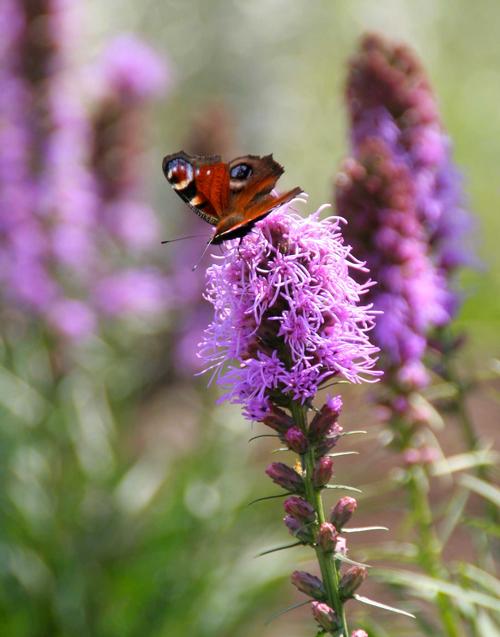Your Guide to Planning, Planting, and Growing Liatris
Liatris is a summer-blooming perennial with grassy foliage and fuzzy, bottle-brush flowers. Commonly known as blazing star or gayfeather, this North American wildflower makes an attractive addition to flower gardens, cutting gardens, landscaped areas and informal plantings. The distinctive flower spikes stand 2 to 4-feet-tall and are magnets for butterflies.
Start with a Better Plant
Liatris grows from a bulb-like corm. Longfield Gardens supplies large, grade #1 corms (shown far left) that grow into healthy plants with strong root systems.

Plan for Success
Sun and Shade: Liatris grows best in full sun, though the plants will also tolerate some shade.
Zone: Liatris is winter hardy in zones 3-8. Not sure about your hardiness zone? Check the USDA zone map here.
When to Plant: Liatris corms are planted in spring, when the weather is cool and it's easy for the young plants to get established. Flowers usually appear the first year, approximately 70 to 90 days after planting, and the plants will return to bloom again for years to come.

Where to Plant Liatris
Liatris grow wild in meadows and prairies throughout many parts of the U.S. Though the plants prefer well-drained soil, they will tolerate more moisture than many other garden perennials, so are often included in rain gardens.
Liatris can be an eye-catching addition to flower gardens. Their stately, wand-like flowers bloom in mid to late summer. Flower color is typically amethyst-purple, though there are also cultivars with pink or white flowers. Liatris are good cut flowers, and look wonderful in a vase with dahlias, zinnias and other summer blooms.
Because they are native plants, liatris are vigorous enough to hold their own when planted in a meadow or other natural area. The flowers attract a wide range of butterfly species, and this makes liatris a must for butterfly gardens. You'll find it's a good companion for ornamental grasses, and looks especially attractive planted in large sweeps or drifts.

How to Plant Liatris
The corms may be planted individually or you can dig a larger hole and plant several bulbs at the same time.
Loosen the soil to a depth of 6-8” and dig a 3"-deep hole.
Position the corms in the hole, about 5" apart on center, with the smooth side down and the sprouts facing up.
Cover with soil and water them in if the soil is dry.

What to Expect
Liatris are tough plants, but if the weather is very dry, the newly planted corms should be watered weekly to help them establish a strong root system. As with all bulbs, avoid over-watering.
After the first couple months, liatris will need little to no attention. The plants are relatively drought tolerant, naturally pest and disease resistant, and deer usually ignore them.

Caring for Liatris after they Flower
When liatris have finished blooming, the flower stalks may be cut off at the base of the plant. But feel free to leave them standing -- especially in naturalistic plantings where the spent flowers provide vertical interest long after their color has faded.
Give your butterfly friends a treat by planting liatris! The corms are available for spring planting from March-May. To shop, click HERE.
To learn more about butterfly gardening, you may be interested in reading: How to Attract Butterflies to Your Garden.


